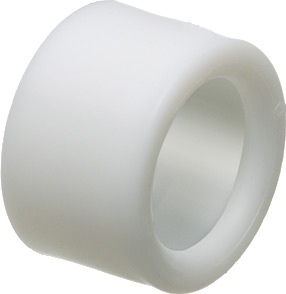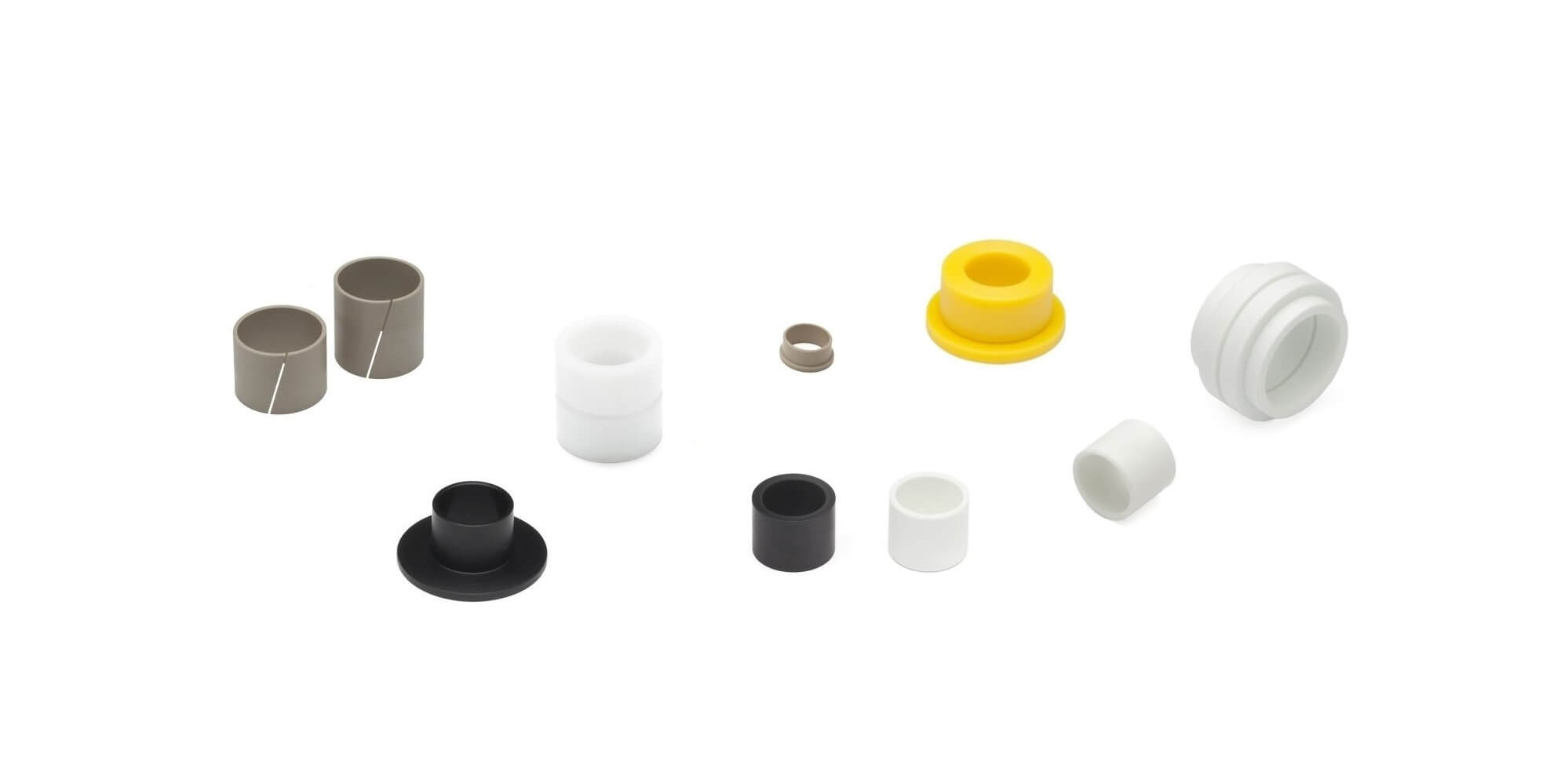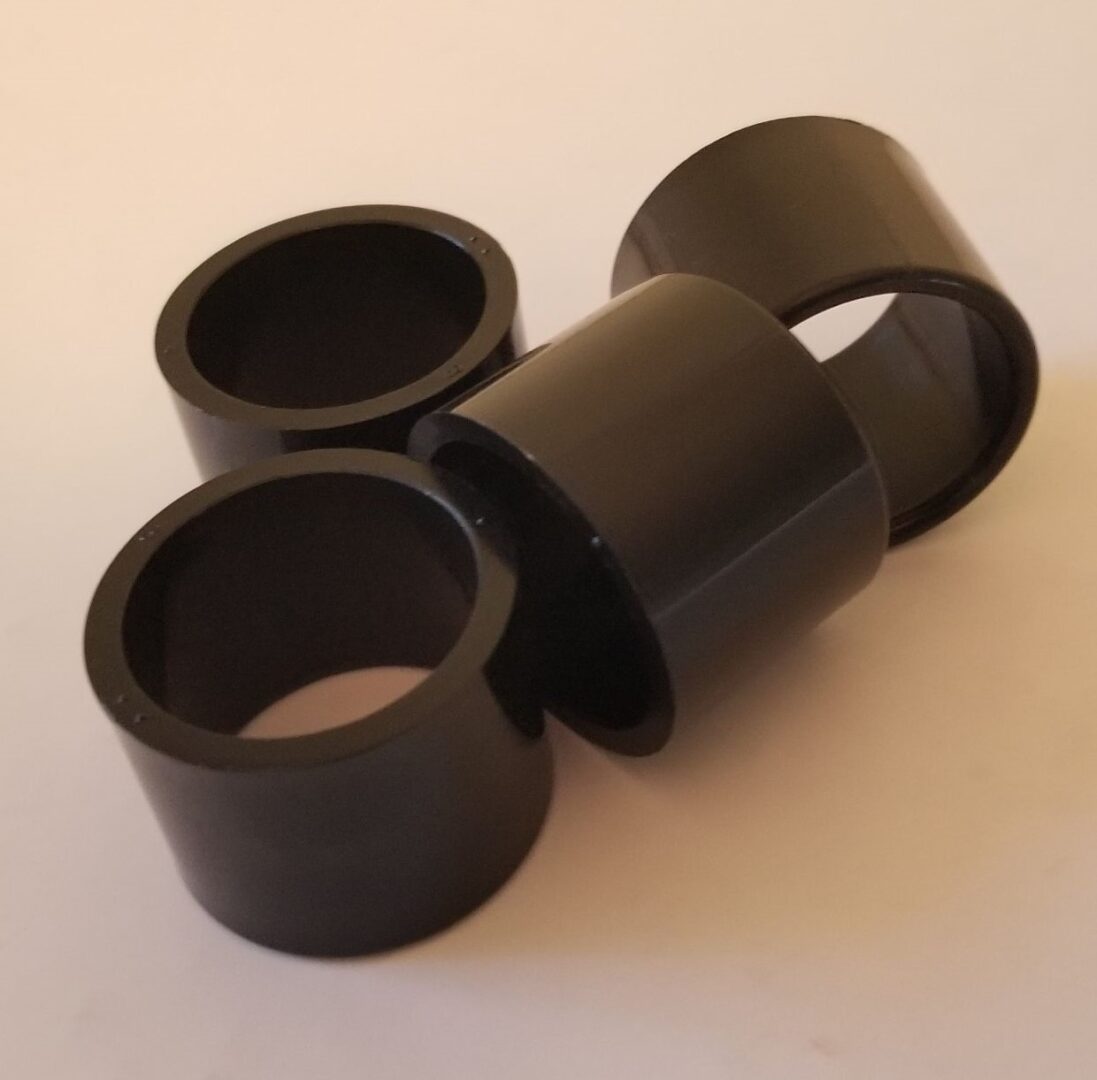
What are the environmental benefits of using plastic bushings, and how do they contribute to sustainability?
Plastic bushings offer several environmental benefits and contribute to sustainability in various ways. Here are some of the key advantages:
- Reduced Energy Consumption: Plastic bushings generally have lower friction coefficients compared to metal bushings, which results in reduced energy consumption. The lower friction allows for smoother operation and requires less power to overcome resistance, leading to energy savings. This can be particularly significant in applications with high-speed or continuous motion, where energy efficiency is crucial.
- Elimination of Lubrication: Many plastic bushings are self-lubricating or require minimal lubrication. Unlike metal bushings, which often require regular lubrication to maintain optimal performance, plastic bushings can operate effectively without the need for lubricants. This eliminates the need for oil or grease, reducing the consumption of lubrication products and minimizing the associated environmental impacts, such as oil spills or the disposal of used lubricants.
- Corrosion Resistance: Plastic bushings are generally resistant to corrosion, which can be a significant advantage in various environments. Unlike metal bushings, which may corrode and require frequent replacement, plastic bushings can withstand exposure to moisture, chemicals, and other corrosive substances. This extended service life reduces the frequency of bushing replacements, leading to less material waste and lower environmental impact.
- Weight Reduction: Plastic bushings are typically lighter than their metal counterparts, contributing to weight reduction in machinery and equipment. The use of lighter components can result in lower energy consumption during operation, especially in applications that involve frequent acceleration or deceleration. Additionally, reduced weight can lead to more efficient transportation and decreased fuel consumption during shipping.
- Recyclability: Many plastic bushing materials are recyclable, allowing for the recovery and reuse of the materials at the end of their service life. Plastic bushings made from recyclable materials can be collected, processed, and transformed into new products, reducing the demand for virgin materials and minimizing waste generation. Proper disposal and recycling practices contribute to a circular economy and the conservation of natural resources.
- Noise Reduction: Plastic bushings often exhibit superior damping properties compared to metal bushings, resulting in reduced noise and vibration levels. This can be advantageous in applications where noise reduction is important, such as in residential or office environments. By minimizing noise pollution, plastic bushings contribute to improved working conditions, increased comfort, and enhanced overall environmental quality.
By utilizing plastic bushings and benefiting from their environmental advantages, industries can contribute to sustainability efforts by reducing energy consumption, minimizing lubrication requirements, extending equipment lifespan, promoting recyclability, and improving overall operational efficiency. However, it is important to note that the sustainability of plastic bushings also depends on responsible manufacturing practices, proper disposal or recycling methods, and the selection of eco-friendly materials.

Can I find reviews comparing the durability and performance of different types of plastic bushings?
Yes, it is possible to find reviews comparing the durability and performance of different types of plastic bushings. Reviews can be valuable resources for gaining insights into the real-world experiences of users and professionals who have tested and evaluated various plastic bushings. Here are some ways to find reviews comparing the durability and performance of different types of plastic bushings:
- Online Retailers and E-commerce Platforms: Online retailers and e-commerce platforms that sell plastic bushings often have customer review sections where users can share their experiences and opinions. Browse through the product listings of plastic bushings and look for reviews or ratings provided by customers. While individual reviews may not directly compare different types of bushings, they can still offer valuable insights into the durability and performance of specific products.
- Industrial Forums and Discussion Boards: Participating in online forums and discussion boards dedicated to industrial machinery, engineering, or related topics can provide access to valuable user experiences and comparisons. Engage in discussions, ask questions, and inquire about the experiences of professionals who have tested different types of plastic bushings. These platforms often have knowledgeable members who can share their insights and provide comparisons based on their firsthand experiences.
- Industry Publications and Magazines: Industry-specific publications and magazines may feature articles, case studies, or product reviews that compare the durability and performance of different types of plastic bushings. Check online or physical copies of these publications related to the machinery, engineering, or industrial sectors for any available reviews or comparisons. These sources often provide in-depth analysis and expert opinions on the performance of various plastic bushings.
- Manufacturer and Supplier Websites: Manufacturers and suppliers of plastic bushings sometimes publish technical articles, white papers, or case studies that highlight the performance characteristics and durability of their products. Visit the websites of reputable manufacturers or suppliers and explore their resources sections or technical documentation. While these sources may focus more on promoting specific products, they can still provide valuable information and insights into the performance of different types of plastic bushings.
- Research Papers and Technical Journals: Academic research papers and technical journals in the field of materials science, engineering, or tribology may contain studies or comparative analyses of different plastic bushing materials. Access online databases of research papers or visit university libraries to search for relevant publications. These sources often provide scientific data, test results, and detailed evaluations of the durability and performance of various plastic bushings.
When reviewing and comparing different types of plastic bushings, it’s important to consider multiple sources and perspectives. Keep in mind that the performance of plastic bushings can be influenced by various factors, including application-specific conditions, load requirements, temperature ranges, and chemical exposures. Assessing reviews and comparisons in the context of your specific application and requirements can help you make informed decisions.
By utilizing reviews and comparisons, you can gain valuable insights into the durability and performance of different types of plastic bushings, helping you select the most suitable option for your specific needs.

What are the key considerations when selecting plastic bushings for corrosive environments?
When selecting plastic bushings for corrosive environments, it’s essential to consider several key factors to ensure the longevity and performance of the bushings. Corrosive environments can pose significant challenges to materials, including degradation, chemical attack, and loss of mechanical properties. Here are the key considerations when selecting plastic bushings for corrosive environments:
- Chemical Compatibility: The first and foremost consideration is the chemical compatibility of the plastic material with the corrosive substances present in the environment. Different plastics have varying degrees of resistance to specific chemicals. It’s crucial to identify the types of corrosive chemicals, acids, bases, solvents, or other substances that the bushings will be exposed to and choose a plastic material that offers excellent resistance to those specific chemicals.
- Material Selection: Certain plastic materials are known for their superior chemical resistance properties. For corrosive environments, consider using plastic materials such as PTFE (Polytetrafluoroethylene), PVDF (Polyvinylidene Fluoride), PPS (Polyphenylene Sulfide), or ETFE (Ethylene Tetrafluoroethylene). These materials offer excellent resistance to a wide range of corrosive chemicals and can withstand harsh environments.
- Temperature Range: In addition to chemical compatibility, consider the temperature range of the corrosive environment. Some plastics may have temperature limitations and can degrade or lose their chemical resistance properties at elevated temperatures. Ensure that the selected plastic material can withstand the temperature range of the corrosive environment without compromising its performance or chemical resistance.
- Load and Wear Requirements: Evaluate the load and wear requirements of the application. Corrosive environments may involve abrasive particles or high loads that can accelerate wear and reduce the lifespan of the bushings. Select plastic materials that offer excellent wear resistance and can withstand the specific load conditions of the application.
- Sealing and Contamination: Corrosive environments often involve the presence of moisture, gases, or contaminants. Consider whether the bushings need to provide sealing properties to prevent ingress of corrosive substances or contamination. Some plastic bushings can be designed with additional sealing features to enhance protection against corrosive elements.
- UV and Weather Resistance: If the corrosive environment involves exposure to sunlight or outdoor weather conditions, consider the UV resistance and weatherability of the plastic material. Some plastics may degrade or experience color fading when exposed to prolonged sunlight or extreme weather conditions. Choose a plastic material that offers good UV resistance and weather resistance properties if applicable.
- Manufacturer Expertise: Work closely with manufacturers or suppliers who have expertise in providing plastic bushings for corrosive environments. They can offer guidance on material selection, design considerations, and provide specific recommendations based on their experience and knowledge of different plastic materials and their performance in corrosive environments.
It’s important to thoroughly assess the corrosive environment and consult with experts to ensure the right plastic material is selected for the bushings. Conduct compatibility tests, review material datasheets, and consider real-world application experiences to make an informed decision. Additionally, proper installation, regular inspection, and maintenance practices should be followed to maximize the performance and lifespan of the plastic bushings in corrosive environments.
By considering these key factors, you can select plastic bushings that are well-suited for corrosive environments, providing reliable and long-lasting performance even in the presence of corrosive substances.


editor by CX 2024-04-12